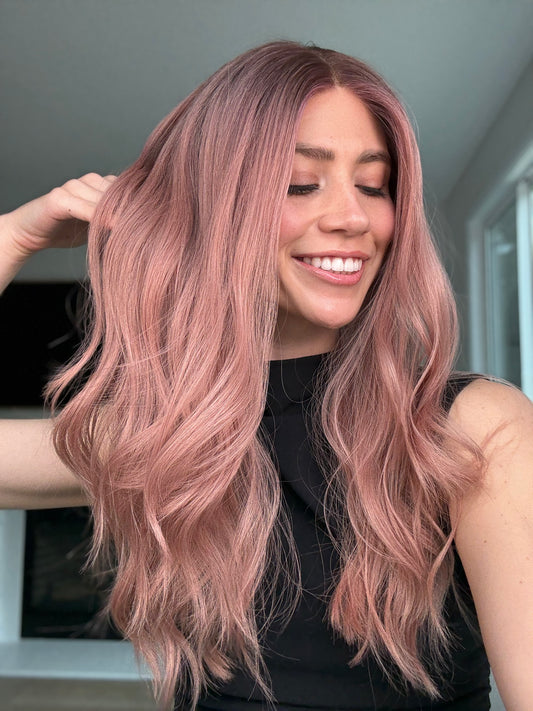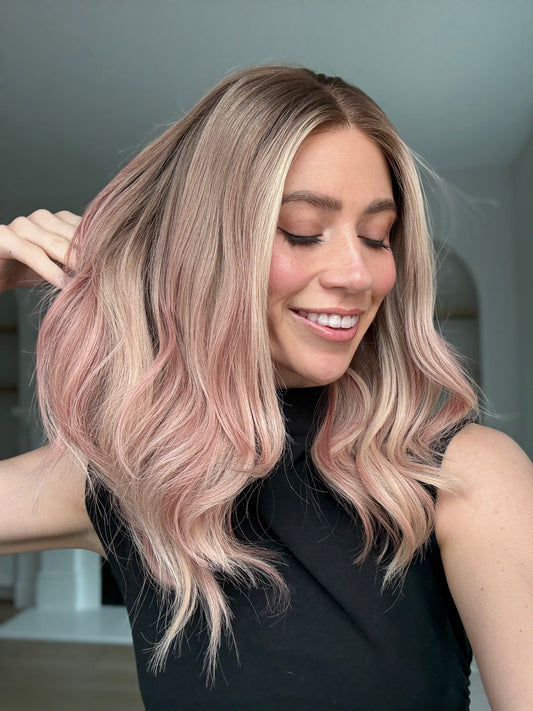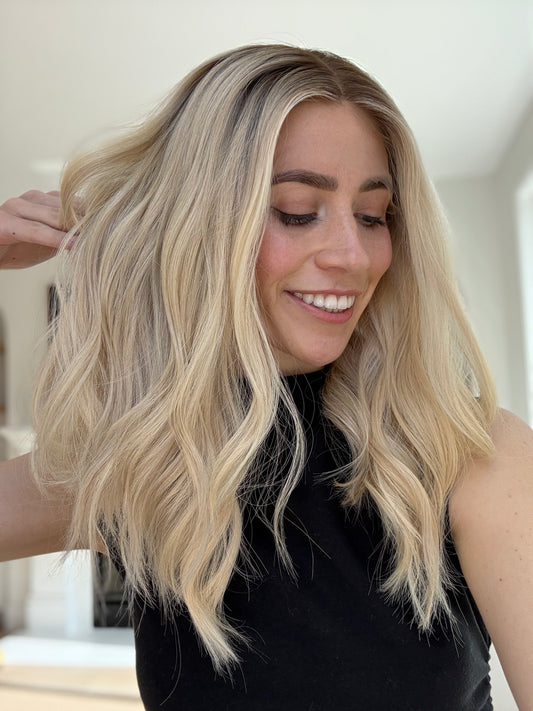Best Wigs for Medical Hair Loss: Lightweight, Glueless & Low-Density Options for Everyday Comfort
Losing your hair due to chemotherapy, alopecia, or a medical condition is more than just a physical change—it’s an emotional journey. Hair is tied to identity, confidence, and femininity. When it begins to shed or disappear, it can feel like losing a part of yourself.
At Radiant Hair Co., we work with women navigating all stages of hair loss. Whether you're undergoing treatment or adjusting to permanent thinning, we believe you deserve a wig that’s safe, beautiful, and truly wearable every day. This guide explains what to look for in the best wigs for medical hair loss, and why lightweight, glueless, low-density wigs are the top choice for long-term comfort and confidence.
Why Medical Hair Loss Requires a Different Kind of Wig
Medical hair loss often leaves the scalp more sensitive. Irritation, dryness, tenderness, or patchiness can make traditional wigs—especially thick or glued-down styles—feel heavy, itchy, or even painful.
Many wigs on the market are built for volume and glam. But when your goal is comfort, realism, and a gentle feel, you need a wig that prioritizes your skin and scalp. That’s why we recommend focusing on three features:
-
Low density for a natural look and breathable feel
-
Glueless construction to avoid adhesives that pull or irritate
-
Lightweight materials that won’t overheat or press on delicate areas

What Is a Low-Density Wig—and Why It’s Best for Hair Loss
Wig density refers to how much hair is sewn onto the wig cap. Low-density wigs (100% to 130%) mimic the natural fullness of real hair. They are:
-
Easier to style and wash
-
Less heavy on the scalp
-
More breathable and realistic
-
Ideal for medical hair loss or post-treatment wear
Unlike high-density wigs (150% to 200%) that may feel bulky or unnatural on a bare scalp, low-density wigs create soft movement and subtle fullness. They are especially helpful for women with migraines, scalp sensitivity, or those adjusting to life without bio hair.
Pro Tip: Don’t rely on density percentage alone. Look for terms like “low density,” “lightweight,” or “realistic volume” in product descriptions.
Why Glueless Human Hair Wigs Are the Safest Option
Adhesives can be harmful to sensitive scalps. Many women experiencing hair loss cannot tolerate glue, tape, or gel due to:
-
Open follicles or inflammation
-
Scalp sensitivity during chemo or radiation
-
Risk of irritation or long-term traction damage
Radiant Hair Co. specializes in glueless human hair wigs that are secure yet gentle. Our adjustable bands and silicone grip lining keep your wig in place without adhesives—perfect for daily wear or medical recovery.
Because our wigs are glueless, you can:
-
Take them off easily to rest your scalp at night
-
Wash your wig and scalp separately to avoid buildup
-
Avoid further damage to edges, baby hairs, or healing areas
Cap Construction Matters: Silk Top vs. Lace Front Wigs for Hair Loss
Your wig cap construction impacts not only how the wig looks but also how it feels—especially important for medical hair loss.
-
Lace Front Wigs
Offer a realistic hairline and breathability. These wigs feel light and sit flat against the skin—ideal for sensitive scalps. -
Silk Top Wigs
Offer the most natural-looking scalp but contain more layered material, which may feel heavier if not low-density. Choose these only if labeled lightweight or low-density. -
Sport Wigs
These are designed for active wear—perfect for women in recovery who want quick, secure styles for errands, workouts, or lounging. -

Wearing a Wig Should Help You Feel Like You Again
The best wigs for medical hair loss don’t just cover your scalp—they help restore your sense of identity, comfort, and confidence. When chosen with care, a wig becomes part of your healing—not just a replacement.
One Radiant Hair Co. customer shared her powerful journey:
Paula R., Verified Buyer — “Feeling like myself again!”
“This was my first wig after 8 years of dealing with alopecia and trying every possible treatment. I wasn’t sure how I would feel finally wearing a wig—but finding Natalie and how beautiful and natural her wigs are made all the difference to me. The wig itself is absolutely beautiful but most importantly super comfortable and for the first time in a long time, I genuinely feel like myself again!! I already can’t wait to get another one!”
Her story is exactly why Radiant Hair Co. exists—to design wigs that feel like real hair, fit like comfortwear, and bring women back to themselves after hair loss.

Best Wig Styles for Medical Hair Loss
When recovering from hair loss, simplicity and realism go a long way. Here are the best styles for comfort and confidence:
-
Short bob wigs (lace front or silk top): Light, breathable, and easy to maintain
-
Shoulder-length straight styles: Natural movement with minimal heat-styling
-
Low-density waves: Soft texture without bulk
-
Sport wigs or throw-on styles: Great for casual wear and sensitive scalps
Explore our in-stock glueless wigs made specifically for women experiencing hair loss.
What to Avoid in a Wig If You Have Medical Hair Loss
To protect your scalp and healing follicles, steer clear of:
-
Glued or taped wigs
-
Tight combs or internal clips
-
High-density caps (180% or more)
-
Synthetic wigs with stiff, irritating caps
Instead, focus on comfort-first features like soft linings, low-density hair, and glueless, adjustable caps.
Final Thoughts: You Deserve a Wig That Supports You
Hair loss is emotional. It’s deeply personal. You deserve a wig that honors your journey—not something itchy, heavy, or synthetic.
At Radiant Hair Co., we create low-density, glueless human hair wigs designed specifically with medical hair loss in mind. Whether you're in active treatment, recovery, or simply looking for comfort without compromise, we’re here to support your confidence—every step of the way.









